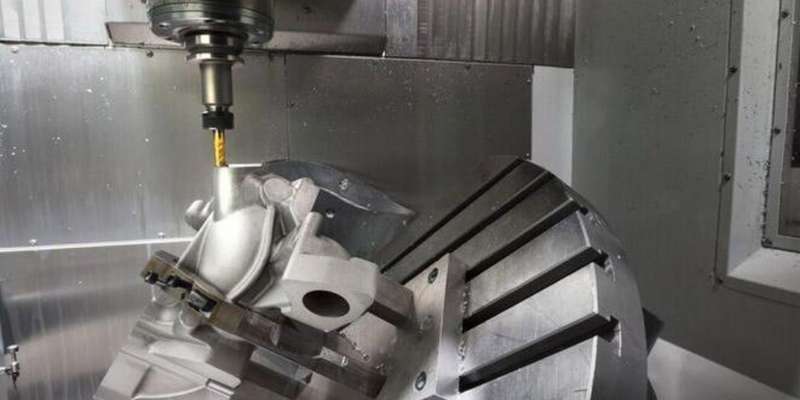
Multi-axis machining has become the preferred choice among CNC shops and manufacturers. The enormous capabilities of CNC machines to produce a variety of high-quality products that meet the highest precision requirements make them the preferred option for many professionals.
However, selecting the right machine type in multi-axis CNC machining is crucial to ensuring the best design options, overall machining process performance, and cost. This article explains multi-axis machining and its main types and benefits. Dive in!
What is multi-axis machining?
Multi-axis CNC machining is a process that allows the cutting tool to rotate/move in three or more different directions. Generally, a computerized numerical control controls the movement of the cutting tool. Multi-axis machining is more complex due to the greater number of axes. The greater the number of axes in a CNC machine, the greater the technology and programming complexity required.
Any number of axes greater than 3 on a CNC machine is considered multi-axis machining. In practice, CNC machines today have up to 12 axes. Therefore, CNC milling machines with more axes can create machined components with complex specifications.
Main types of multi-axis machining
There are several CNC machines with up to three to twelve unique axes at different levels. Here are the main types of multi-axis machine structures.
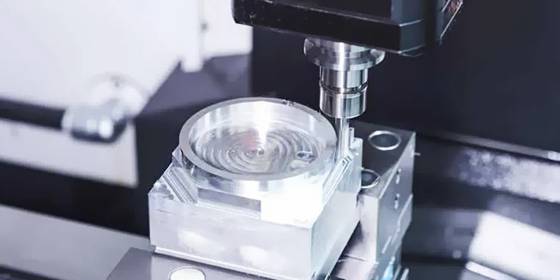
3-axis machining
3-axis CNC machining is the simplest type of multi-axis machining. It usually has a fixed part and a spindle that moves along three axes – X, Y, and Z. 3-axis CNC machining is the simplest choice for machining a part on all six sides.
3-axis CNC milling machines have a linear axis and two independent rotation axes. An electrical or mechanical connection connects the three axes and allows the cutting tool to rotate along each axis.
The X-axis is parallel to the cutting tool, allowing the milling head to move across and along the length of the part. The Y axis maintains a perpendicular position to the cutting tool, allowing the milling head to reach each end of the part. Similarly, the Z axis is perpendicular to the cutting tool while the Z feed is adjusted so that the cutting tool can cut along the surface of the part.
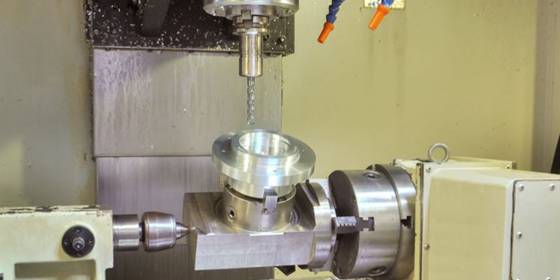
4-axis machining
4-axis CNC machining uses four-axis computer-controlled milling machines to produce three-dimensional parts. These CNC routers can move your tools in four directions. They are more powerful and offer greater precision than 3- and 2-axis machines.
The greater precision in 4-axis machines is due to the movements of the fourth axis. It allows movements around the vertical axis and gives machines a 360-degree dynamic range of motion without special devices.
The additional axis of the 4-axis CNC router makes it a more economical option than a 3-axis CNC router. Additionally, 4-axis milling offers better overall quality than 3-axis milling because four sides can be machined simultaneously without the need to reposition the workpiece. This avoids cases of possible human error in this process.
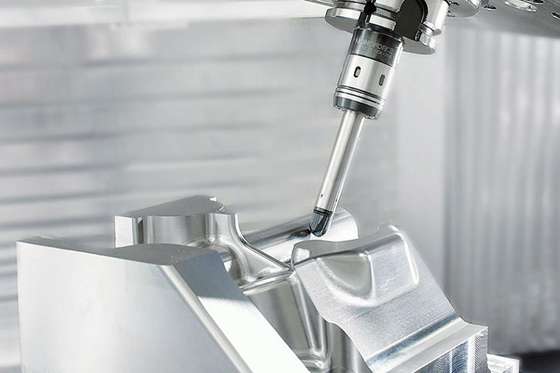
5-axis machining
5-axis machining is a versatile and popular multi-axis subtractive manufacturing process. Five-axis machines are used to cut a raw material into the desired shape. It is useful to know that the number of axes on a machine often determines the direction of the tool and table during machining.
However, 5-axis CNC machining has a significant advantage over 3-axis machining due to its greater number of axes and capabilities. 5-axis machines allow rotation in two planes, combined with the ability of cutting tools to move in three directions. Furthermore, 5-axis CNC milling machines can perform highly complex tasks without errors.
A 5-axis machine uses these three linear axes and two additional axes – A and B. The A axis specifies the axis of rotation along the X axis, while the B axis specifies the rotation/motion around the Y axis. There are cases where the machine moves to the C axis instead of the B axis. The C axis indicates rotation along the Z axis.
Advantages of multi-axis machining
CNC shops and companies benefit from the numerous advantages of multi-axis machining, making it the ideal process for many applications. Here are some of those benefits:
1. Reduced labor costs and production time
Multi-axis machines are modern machines with computer-aided numerical control. It is an automated machining process that reduces labor costs as little or no operator intervention is required during machining operations.
With multi-axis machining, no manual work such as retightening is required. This allows you to edit parts much faster without having to constantly change settings. You can also produce parts with complicated designs faster, optimizing your product's time to market.
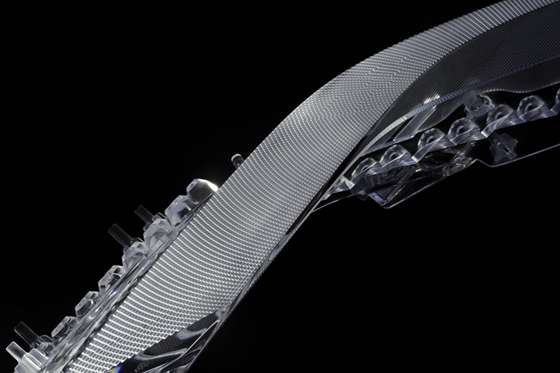
2. High quality surface finish
The cutting tools of multi-axis machines tend to be shorter and have high maneuverability, allowing these tools to be close to the surface to be cut. This reduces vibration or machining noise when these CNC cutting tools move at high speed. The machined parts have excellent surface quality.
3. Greater precision of parts
Another advantage of multi-axis machining is the greater precision of the machined parts due to their large range of movement. These CNC milling machines help you create complex parts or cut any surface in a single operation. This reduces the number of processes and equipment needed to produce a part, while ensuring greater geometric precision. It also eliminates human elements that can cause editing errors.
4. Longer tool life
Traditional machines use cutting tools to cut part material, which often wears out quickly, resulting in delayed production cycle time and poor precision. However, the cutting tool of multi-axis CNC routers does not wear out as quickly because the tool or table is constantly tilted to obtain a perfect cutting angle.
Additionally, you can program multi-axis machines to cut with different sides of each blade to ensure cutting tool longevity.
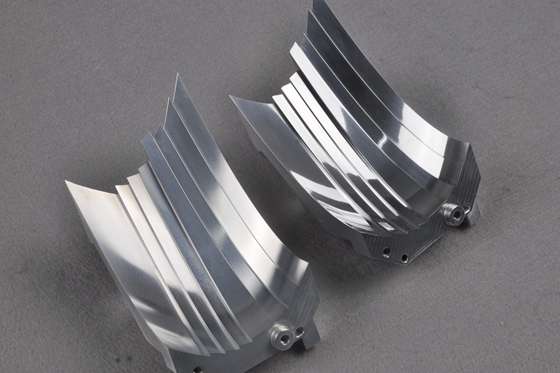
5. Making complex shapes
Multi-axis machines allow manufacturers to smoothly machine complex angles and arcs thanks to additional motions/axes. Machinists must use specialized fixtures and machine lathes to create sophisticated patterns for traditional 3-axis machines. However, multi-axis machines help make complicated projects more economical to produce.
What are the differences between 3, 4 and 5 axis CNC machining?
It is essential to understand the challenges and considerations involved in multi-axis CNC machining. This helps maintain a balance between factors such as cost, product quality and time.
When comparing 3-axis, 4-axis and 5-axis machining options, 5-axis CNC machining is not always suitable for all products, although it is more effective than 4-axis CNC machining and 3-axis CNC editing.
Furthermore, not all products suitable for 3-axis machining are also ideal for 5-axis machining. However, if a product machined with 3-axis machining is suitable for 5-axis machining, its production costs increase astronomically.
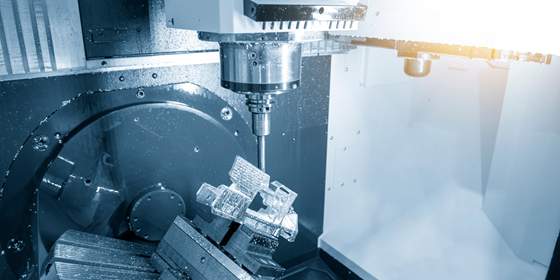
Understanding the differences between these machining processes will help you choose the appropriate machine for your product without compromising essential parameters. Here are the differences between these multi-axis machining processes.
1. Accuracy and precision
High precision and tight tolerances are some of the most important features of CNC machining. Although 3-axis CNC machining has good precision, there is a high probability of errors due to constant repositioning of the part. However, this error rate is negligible for most applications. However, the slightest deviation can lead to complications in sensitive aerospace applications.
However, with 4- and 5-axis machines, no repositioning is necessary; Therefore, they generally do not have runout errors as with 3-axis machining. These 4 and 5 axis CNC machines can add features to a part at multiple levels/positions with a single fixture. However, consistent repositioning in 3-axis machining is a factor that influences machining deviation.
2. Working principles
All CNC machining follows the same operating principle. The computer-controlled cutting tool rotates around the workpiece material to make the desired cuts. Additionally, G codes or M codes control the movement of the CNC machines cutting tool relative to the workpiece.
However, the ability to rotate in different planes shows the differences between 3-, 4- and 5-axis machines. Both 5-axis and 4-axis CNC machines allow rotation/movement along a different axis, allowing the machining of products with complex shapes and geometries.
3. Applications
A product's requirements or design complexity, not the industry, determines the optimal multi-axis machining for a product. This is how you can use a 3-axis machine to produce a simple aerospace component. However, developing complex components for other industries can be done with a 4- or 5-axis CNC milling machine.
4. Costs
Cost is another key parameter in the differences between 3-, 4-, and 5-axis machining. In general, the 3-axis machine is the most economical option to purchase and maintain. However, factors such as the availability of machine operators and accessories often impact the operating costs of 3-axis machines in a workshop.
Nowadays, 4-axis and 5-axis machines are more advanced and offer more advanced features, which makes them relatively expensive. However, their tremendous capabilities make them the perfect choice for unique conditions.
Get multi-axis machining services from WayKen
Most importantly, we have our own workshop with experienced professionals who will accompany you every step of the way. This helps to avoid possible complications or errors in the programming, production or post-production phases. Thanks to our professional CNC milling services, we can also meet your supply chain requirements. Contact us today and let's talk about your next project!

Common questions
How is multi-axis CNC machining better than manual machining?
Multi-axis CNC machining is superior to manual machining in areas such as accuracy and precision, production speed, cost and efficiency. Furthermore, CNC machining has a lower scrap rate compared to manual machining.
How 5 axis machine is better than 3 axis machine?
5-axis machining offers greater precision, accuracy, greater design flexibility and faster delivery times compared to 3-axis machining.

























































